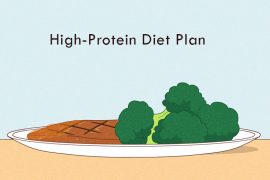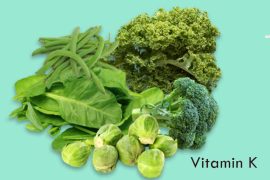Carbohydrates can be complex to understand, as they exist in both simple and complex forms. They are found in unhealthy snacks and essential health-promoting foods alike. To comprehend how carbohydrates function in your diet, it’s helpful to have some key insights.
Carbs are often categorized as either “simple” (refined) or “complex” based on how quickly the body converts them into blood glucose. Simple carbs, like glucose and fructose, are rapidly converted into energy. Highly processed foods such as sugary sweets and sodas are rich in simple carbs. Around 40% of Americans’ calorie intake is from low-quality simple carbs.
“It gets a little confusing,” stated Andrew Odegaard, associate professor of epidemiology and biostatistics at the University of California, Irvine. Even experts disagree on some aspects of how carbohydrates function.
Complex carbs, on the other hand, include starches, which are chains of simple sugars. They release energy more steadily, providing sustained fuel. Foods like peas, beans, whole grains, and vegetables are rich sources of complex carbs.
“When people think of carbohydrates, what they’re thinking of can vary a lot,” stated Odegaard, whose work has included studies on diet, diabetes and heart disease. But from the most basic perspective, a carbohydrate is a molecule made up of carbon, hydrogen and oxygen. When digested, carbs are converted into blood glucose, or sugar, which provide fuel for cells throughout the body.
“For most people, it’s the fundamental source of energy in their diet,” Odegaard stated.
Fiber, a complex carb, cannot be broken down by the body, resulting in stable blood glucose levels. It also brings multiple health benefits.
Excessive blood glucose converts into triglycerides, a type of fat that can lead to artery blockages and increase the risk of heart problems.
Experts suggest that the quality of carbs is more crucial than the quantity. Carbohydrate sources matter. While pastries and sugary beverages contain carbs, fruits and vegetables do too. However, the latter also offer various essential nutrients for heart health.
“It’s the same thing with oranges and orange juice,” Odegaard stated. And with grains.
Comparing carbs in context is crucial. For instance, both a candy bar and a banana may have similar carb content, but the banana includes nutrients like potassium, magnesium, and fiber, without the added sugar. Moreover, you can consume twice the weight of a banana compared to a candy bar while still ingesting the same amount of carbs.
Odegaard does not think carbs are inherently villains. After all, he stated, “as a species, we’ve evolved the ability to have our bodies metabolize what we eat and turn it into the fuel that our body needs to function,” and carbohydrates are the primary way of doing that.
While simple vs. complex was once the focus of carb discussions, processing’s role is now being highlighted. Highly processed carbs from foods like apple juice can quickly elevate blood glucose, unlike an apple that contains fiber and other nutrients that slow down digestion.
“In people with Type 2 diabetes, the proportion of your overall dietary pattern that’s carbohydrates is something you may need to pay attention to,” stated Odegaard, a senior author of that study. “But that’s something for someone to discuss with their care provider team and figure out what works for them.”
Whole-grain foods like brown rice are deemed heart-healthy. Milling grains strips away fiber and nutrients. A cup of cooked instant white rice contains 44g of carbs and only about 1g of fiber, while cooked brown rice has about 52g of carbs but more than 3g of fiber.
Low-carb diets have become popular, but experts emphasize the importance of carbohydrates. Inadequate carb consumption can lead to the body producing blood sugar from stored fat through ketosis. Balancing carbs and physical activity is crucial for those with Type 2 diabetes.
Gardner, who is also a nutrition scientist at the Stanford Prevention Research Center, stated the goal should be to “get rid of as many of those low-quality/simple carbs as possible.” Replace some of them with healthy carbs and others with sources of high-quality unsaturated fat, such as nuts, seeds, fatty fish, avocados and olive oil.
Experts recommend that 45% to 65% of a healthy adult’s calories should come from carbohydrates. For people with diabetes, managing carb intake is essential.
In summary, focusing on the source and quality of carbs is key. While healthy carbs from whole grains, legumes, fruits, and vegetables are beneficial, low-quality simple carbs should be limited. Replacing unhealthy carbs with nutritious sources and unsaturated fats is advised for a balanced diet.
Disclaimer:
The information contained in this article is for educational and informational purposes only and is not intended as a health advice. We would ask you to consult a qualified professional or medical expert to gain additional knowledge before you choose to consume any product or perform any exercise.








